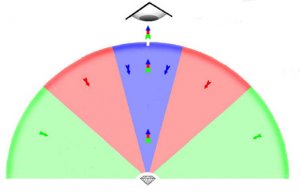- Joined
- Jul 21, 2004
- Messages
- 9,159
As I understand it, with the new AGS grading, there are 10 theoretical observations made of the stone, one of which is represented in the ASET scope. The others are similar with the stone tilted towards the four compass points and a similar set with a bigger blue area. I have a question about the tilt. Is the stone being lighted the same way and just observed from a different direction? In effect, is the peephole in the cone moving, is the entire blue section representing the observers head moving, or is the entire cone tilting?
Neil Beaty
GG(GIA) ISA NAJA
Independent Appraisals in Denver












300x240.png)